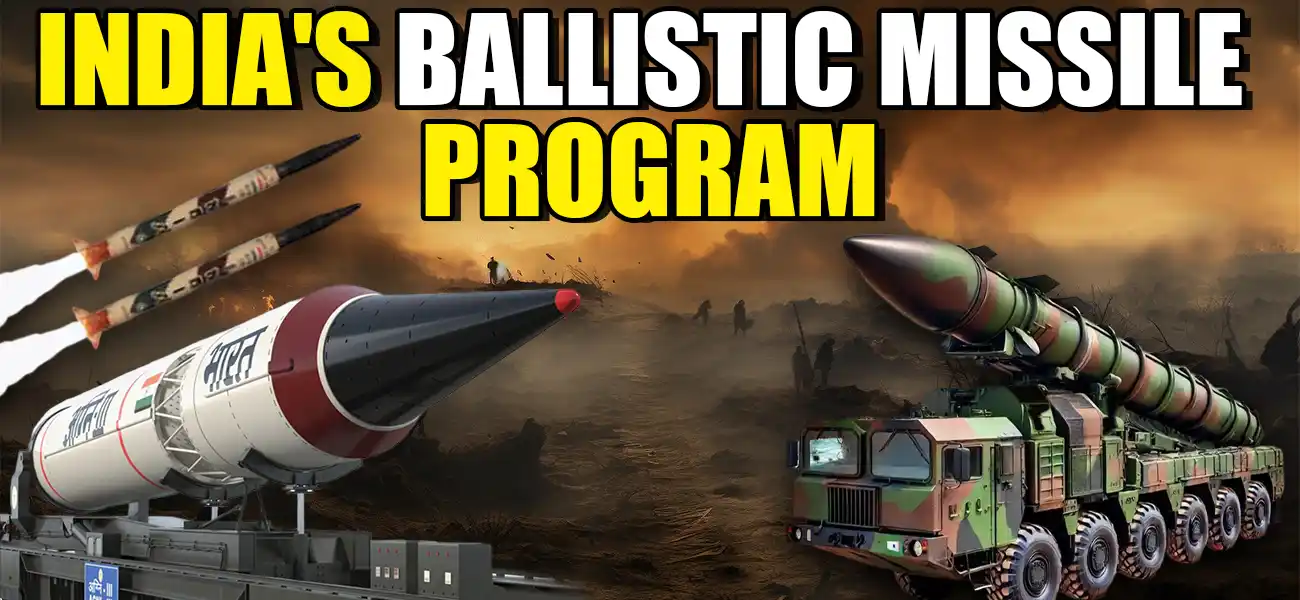The Pride of the Nation: A Deep Dive into India's Ballistic Missile Program

In the global arena, a nation’s strength is often measured by its ability to defend its sovereignty and strategic interests. At the heart of India’s formidable defence architecture lies a program that is a testament to our scientific prowess and self-reliance: India’s Ballistic Missile Program. For every young Indian dreaming of wearing the uniform, understanding this program is not just about general knowledge; it’s about appreciating the shield that protects our billion-plus people.
This program is a symbol of deterrence, a guarantor of peace through strength, and a cornerstone of our national security policy. Let’s explore the journey, capabilities, and strategic importance of this incredible national achievement.
The Genesis and Evolution of India's Ballistic Missile Program
The story of our missile supremacy began with a visionary project: the Integrated Guided Missile Development Programme (IGMDP). Conceived in the early 1980s under the leadership of the legendary Dr. A.P.J. Abdul Kalam, the IGMDP aimed to make India self-sufficient in missile technology.
This ambitious initiative laid the foundation for India’s Ballistic Missile Program, resulting in a diverse arsenal of world-class missiles. The program’s success is rooted in the “Atmanirbhar Bharat” philosophy, decades before the term became a national slogan.
The Two Pillars: The Agni and Prithvi Series
The IGMDP gave birth to two primary families of ballistic missiles, each designed for a specific strategic purpose.
1. The Prithvi Series: Tactical Supremacy
The Prithvi missile series represents India’s capability in short-range, tactical warfare. These are surface-to-surface ballistic missiles designed for battlefield use.
- Prithvi-I & Prithvi-II: Deployed by the Indian Army and Air Force, these missiles have ranges of 150 km and 350 km respectively, capable of carrying conventional warheads with high accuracy.
- Prithvi-III (Dhanush): A naval variant with a range of 350 km, the Dhanush is designed to be launched from ships, giving India a powerful sea-based tactical strike capability.
2. The Agni Series: The Spear of Strategic Deterrence
The Agni series is the crown jewel of India’s Ballistic Missile Program. These are medium to intercontinental-range ballistic missiles that form the bedrock of India’s nuclear deterrence. The name ‘Agni’ (Fire) perfectly encapsulates their immense power.
- Agni-I & Agni-II: With ranges of 700 km and over 2,000 km, these missiles provide a credible deterrent against regional threats.
- Agni-III & Agni-IV: These represent a significant leap in technology, with ranges extending to 3,500 km and 4,000 km. They feature advanced navigation systems and re-entry vehicle protection.
- Agni-V: The game-changer. An Intercontinental Ballistic Missile (ICBM) with a range exceeding 5,000 km, the Agni-V places India in an elite club of nations. It can be canister-launched from a mobile platform, making it extremely difficult to track and destroy, thus ensuring a credible second-strike capability.
Securing the Second Strike: Submarine-Launched Ballistic Missiles (SLBMs)
To complete the nuclear triad (the ability to launch nuclear weapons from land, air, and sea), India developed a robust submarine-launched ballistic missile capability. The K-series missiles, named after Dr. Kalam, are the cornerstone of this.
Launched from our indigenous nuclear-powered submarines like the INS Arihant, missiles like the K-15 Sagarika and the K-4 ensure that India can retaliate even if its land-based assets are compromised. This makes our nuclear deterrent posture exceptionally strong and survivable.
Strategic Importance of India's Ballistic Missile Program
Why is this program so vital for our country?
- Credible Minimum Deterrence: It supports India’s policy of maintaining a credible, minimum deterrent against nuclear threats.
- No First Use Policy: The survivability and power of our missile arsenal make our “No First Use” nuclear policy credible. It sends a clear message: we will not start a conflict, but we have the unassailable capability to respond if attacked.
- Regional Stability: A strong and self-reliant India is a stabilizing force in the Indo-Pacific. Our missile program deters aggression and promotes peace in a volatile neighbourhood.
- Technological Self-Reliance: From propulsion systems to guidance electronics, India’s Ballistic Missile Program is a shining example of indigenous innovation, driven by organizations like DRDO.
Be a Part of the Legacy with Indian Defence Institute
The missiles, tanks, and aircraft that guard our nation are operated by the bravest and brightest minds—the officers of the Indian Armed Forces. The journey to becoming such an officer is challenging, demanding dedication, discipline, and expert guidance.
This is where the Indian Defence Institute steps in. Recognized as the Best NDA Coaching in Dehradun, we are committed to shaping the future defenders of our nation. Our curriculum is not just about clearing an exam; it’s about instilling the knowledge, character, and leadership qualities that the armed forces demand. We provide our students with a deep understanding of subjects like India’s Ballistic Missile Program so they can walk into their SSB interviews with confidence and a true appreciation for the forces they aspire to join.
If you dream of serving the nation and being part of the proud legacy that protects India, your journey begins with the right preparation.
Join the Indian Defence Institute in Dehradun and take the first decisive step towards a glorious career in the Indian Armed Forces. Be the shield of the nation!
Get Free Counselling
